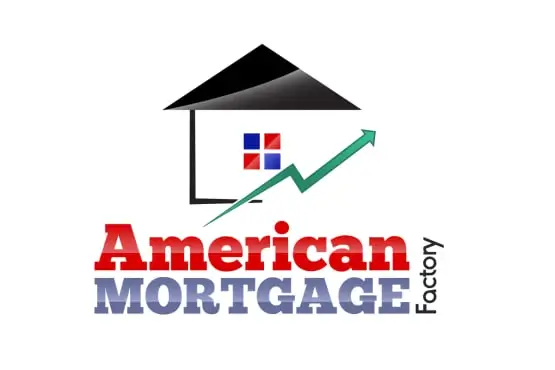

Joint VA loans allow veterans, active-duty service members, and eligible civilians to combine their financial resources to purchase a home together. While less common than standard VA loans, this option provides flexibility for borrowers who want to pool their income and share homeownership responsibilities.
What Is a Joint VA Loan?
A joint VA loan enables multiple borrowers to apply for a single VA-backed mortgage. Unlike traditional VA loans with a single borrower, joint loans allow you to combine incomes, improving your purchasing power and qualification potential.
Who can participate in a joint VA loan:
Two or more veterans or active-duty service members can combine their VA entitlements. A veteran or active-duty member can partner with a non-veteran spouse. In some cases, a veteran can co-borrow with a non-spouse civilian, though this arrangement has additional requirements.
How VA entitlement works in joint loans. Each VA-eligible borrower contributes their entitlement proportionally to the loan. This combined entitlement can help you qualify for a larger loan amount without requiring a down payment, depending on the loan size and property value.
Advantages of Joint VA Loans
Increased buying power. Combining incomes allows you to qualify for a larger loan amount than you could obtain individually. This can make the difference between affording a starter home and purchasing a property that better meets your long-term needs.
Shared financial responsibility. Multiple borrowers share the mortgage payment, property taxes, insurance, and maintenance costs. This can make homeownership more affordable for each party.
Access to better properties. Higher qualification amounts may allow you to purchase in more desirable neighborhoods or buy larger properties that accommodate multiple families or provide rental income potential.
No down payment in many cases. When all borrowers are VA-eligible and the loan amount stays within entitlement limits, you may not need a down payment at all.
Requirements and Limitations
VA-eligible borrowers must meet standard criteria. You need a valid Certificate of Eligibility (COE), meet credit and income requirements, and have sufficient remaining entitlement for your portion of the loan.
Non-veteran co-borrowers face additional requirements. Civilians joining a VA loan must meet conventional loan standards, which typically include higher credit score requirements and may require a down payment. The presence of a non-veteran borrower can affect loan terms and requirements.
Occupancy requirements apply. At least one veteran borrower must intend to occupy the property as their primary residence. This standard VA loan requirement ensures the benefit serves its intended purpose of helping veterans secure housing.
Lender discretion matters. Not all lenders offer joint VA loans, and those that do may have stricter requirements than for standard VA loans. The added complexity of multiple borrowers can lead to more rigorous underwriting.
Joint Loans with Non-Veteran Spouses
The most common joint VA loan scenario involves a veteran and their non-veteran spouse. This arrangement typically offers the most favorable terms:
Combined income consideration. Both incomes count toward qualification, increasing your buying power significantly.
Potential down payment requirements. Depending on the loan amount and the veteran's available entitlement, you may or may not need a down payment. When entitlement doesn't cover the full loan amount, you'll typically need 25% of the difference as a down payment.
Both parties on the title. Both spouses hold ownership rights to the property, providing legal protections for the non-veteran spouse.
Joint Loans with Multiple Veterans
When two or more veterans combine their entitlements, the arrangement works differently:
Proportional entitlement use. Each veteran contributes their entitlement based on their ownership share. If two veterans equally own a property, each contributes 50% of the required entitlement.
Potential for no down payment. If combined entitlements cover the full loan amount, no down payment is required regardless of purchase price.
Occupancy by at least one veteran. At least one veteran must occupy the property as their primary residence, though not necessarily all veteran borrowers.
Joint Loans with Non-Spouse Civilians
Veterans can potentially obtain joint loans with civilian friends or family members, but this scenario presents the most challenges:
Limited lender availability. Many lenders don't offer this option due to increased complexity and risk.
Down payment usually required. The civilian co-borrower typically needs to provide a down payment, often at least 12.5% of the purchase price.
Stricter qualification standards. Both borrowers face rigorous credit, income, and asset review. The civilian borrower must meet conventional loan standards.
Legal complexity. Ownership agreements, responsibilities, and exit strategies should be clearly documented in legal agreements beyond the mortgage.
Financial Considerations
Debt-to-income ratios. Lenders evaluate each borrower's debt-to-income ratio individually and combined. Both parties must demonstrate ability to repay the loan comfortably.
Credit score requirements. While VA loans are generally flexible with credit scores, joint loans may require higher scores, particularly when non-veterans participate. Expect minimum scores around 620, with better terms available above 680.
VA funding fee. The VA funding fee applies to joint VA loans. The rate depends on various factors including down payment amount, whether it's a first-time or subsequent use of VA benefits, and whether any borrower has a service-connected disability that exempts them from the fee.
Closing costs. Joint VA loans incur similar closing costs to standard VA loans, including appraisal fees, title insurance, and lender charges. These costs can be paid by either borrower or split according to your agreement.
Legal and Practical Considerations
Ownership structure. Decide how you'll hold title—as joint tenants, tenants in common, or another arrangement. This affects what happens to the property if one owner dies or wants to sell.
Exit strategy. Establish clear terms for what happens if one party wants to sell, refinance, or buy out the other. Document these agreements legally before closing.
Financial responsibilities. Clearly define who pays which expenses, how maintenance costs are split, and how decisions about the property are made.
Liability and default. Understand that all borrowers are equally responsible for the full loan amount. If one party stops paying, the others must cover the full payment or risk foreclosure.
Common Scenarios for Joint VA Loans
Military couples where both are veterans. Two veterans can maximize their combined benefits, potentially purchasing a more expensive home with no down payment.
Veteran with non-veteran spouse. This common arrangement allows couples to use VA loan benefits while combining incomes for better qualification.
Veteran purchasing with parent or sibling. Family members can jointly purchase property, though the veteran must occupy it as their primary residence.
Veterans purchasing investment property together. While at least one must occupy the property, multiple veterans can jointly purchase a multi-unit property where one lives and others rent.
Alternatives to Consider
Sequential purchasing. One party purchases initially, then adds the other to the title later through refinancing or quit claim deed.
Separate financing. If both parties are VA-eligible, purchasing separate properties might provide more flexibility than joint ownership.
Traditional joint conventional loan. In some cases, a conventional loan with multiple borrowers provides more straightforward processing than a joint VA loan.
Making the Decision
Consider these questions before pursuing a joint VA loan:
Is your relationship with the co-borrower stable and trustworthy? Joint loans create long-term financial connections. Ensure you trust your co-borrower completely.
Have you documented agreements clearly? Legal agreements covering ownership, responsibilities, and exit strategies protect all parties.
Do you understand the financial commitment? Each borrower remains responsible for the full loan amount, not just their proportional share.
Have you explored all alternatives? Sometimes other financing structures better serve your needs with less complexity.
The Bottom Line
Joint VA loans offer valuable opportunities for veterans to combine resources and achieve homeownership goals that might be unreachable individually. However, they require careful planning, clear communication, and thorough legal documentation to work successfully.
The added complexity means they're not right for everyone, but in the right circumstances with the right partners, joint VA loans can open doors to homeownership and provide financial benefits for all involved.
Explore Your Joint VA Loan Options
Joint VA loans involve unique requirements and considerations that require specialized knowledge. Our team has extensive experience with VA loans, including joint applications with multiple borrowers. We can help you understand whether a joint VA loan fits your situation, guide you through the qualification process, and connect you with lenders experienced in these specialized loans.
Contact us today to discuss your homeownership goals and explore whether a joint VA loan or another financing option best serves your needs.

